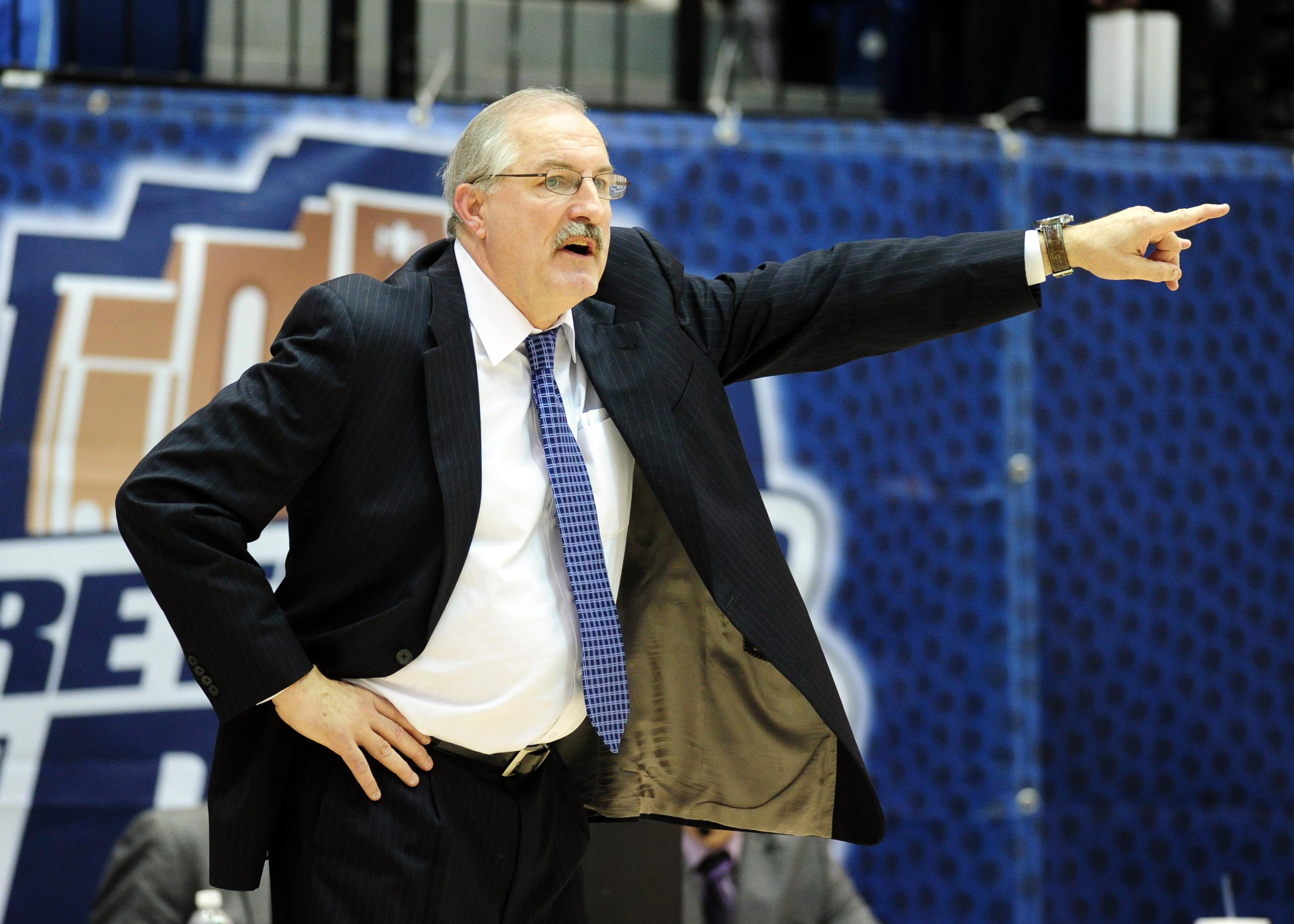
By CHUCKIE MAGGIO
Jim Baron turned 23 years old the day St. Bonaventure won the 1977 National Invitation Tournament. Few birthday gifts could surpass playing at historic Madison Square Garden, just a half-hour train ride away from where he honed his craft at Saint John’s Preparatory School in Brooklyn, in front of family and friends.
“My family, my cousins, I mean I had everybody there,” Baron, the only player on that team from the New York City area, recalled Wednesday. “And the community, I think we had 12,000 people there, national TV, it was wonderful.
“Madison Square Garden is the Mecca. I don’t care what place you say, there’s nothing like Madison Square Garden.”
Bona played at the Garden the year prior as part of the ECAC Holiday Festival and had experienced the bright lights. The three teams it met there before cutting down the nets in ‘77, however, presented gaudy credentials that Baron and Glenn Hagan compared to SBU’s 2022 NIT path.
The Oregon Ducks, dubbed the “Kamikaze Kids” for their hard-nosed, defensive-minded playing style, featured All-America Second Team power forward Greg Ballard and finished second in the Pacific-8 Conference behind UCLA. Rollie Massimino’s Villanova Wildcats rostered the first three brothers to start a college game, with middle brother Keith Herron graduating as the program’s all-time leading scorer.
Then there was Houston All-American Otis Birdsong, who tallied a tournament-high 78 points over the first three games and was still criticized by Cougars coach Guy Lewis.
Lewis told reporters before the title game that Birdsong was “not playing as well as he can.” The 6-foot-3 guard, who was drafted second overall by Kansas City in the NBA Draft less than three months later, responded to the motivational tactic by pouring in 20 points on Bonaventure in the first half.
Bona coach Jim Satalin exhausted his options of slowing Birdsong, who made 16 of his first 23 field goal attempts. Birdsong posted 38 points even with Baron “in his jockstrap,” while Hagan futilely attempted to prevent the ball from reaching him.
Greg Sanders, however, one-upped Birdsong with a career-high 40 points to close the 40th NIT. Sanders and Bona stormed back from a 10-point deficit with 10 minutes left, gaining an 88-87 advantage on Sanders’s 25-footer with 1:07 remaining.
“It was one of those, ‘No, no, no… YEAH!’ shots,” Satalin said afterward, to which Sanders cracked, “My instincts told me not to look to coach for a reaction until after the ball went in. Luckily for me, it did.”
Birdsong didn’t take the potential go-ahead shot with Houston down a point; freshman Ken Williams missed a jumper, instead.
Sanders, the newspapers documented, waved his pointer finger in the air to let the Cougars fans know the Bonnies were No. 1. The move vexed the opposition, much like the current team’s “hat, coat, leave” routine antagonizes crowds after road victories today.
The ‘77 squad’s largest NIT victory was its four-point semifinal triumph over Massimino’s Wildcats; its tournament opener at Rutgers took overtime to decide. The ‘22 squad has won its last two NIT games by three combined points, with the opponent attempting a last-possession shot to tie or take the lead each time.
“I think it’s phenomenal,” Baron said. “I think bouncing back, the team has stuck together and used the adversity as a stepping stone to something that’s very special. To do what they’re doing, there’s a lot of similarities to what we went through 45 years ago.”
“We scored more than this team did,” Hagan assessed. “So when we played, we mostly relied on our offense. This team relies on their defense. We played good ‘D’ when we needed stops, and that’s how we ended up winning.”
The 1977 champs did, indeed, average over 12 more points a night than these Bonnies do. The current iteration does, however, allow over six fewer points per game.
Baron, invited by Bonnies coach Mark Schmidt, spoke to the team on the bus and in the locker room as it prepared for its first and second Charleston Classic games in November. He also attended Bona’s Atlantic 10 Tournament quarterfinal defeat against Saint Louis, experiencing both the joy and agony of a seesaw of a season.
Baron’s message, drawing upon his years of experience as a Bona player as well as a nine-year tenure as the team’s head coach, stuck.
“The biggest thing that I told them was to stick together and not worry about the officials,” Baron explained. “And Mark’s been preaching that; that’s one of his trademarks, keep coming together. It’s an incredible ride that’s just continuing now, to Madison Square Garden.
“It’s a phenomenal accomplishment, because they’re playing against some big-time programs and big-time schools in big-time conferences. … “I’m so happy for Kyle Lofton, because him making those free throws, he just moved forward and he’s leading. He’s leading and the guys are coming together. Osun Osunniyi is playing like a man possessed. So I’m just so happy, happy for the fan base, the student body.”
The college hoops postseason was more exclusive then, with 16 teams in the NIT and 32 in the NCAA as opposed to the modern 32-team NIT and 68-team NCAA Tournament. The NIT was more prestigious then, less of the second-tier tournament it is considered today.
No matter, says Baron. He knows his alma mater will boast a substantial portion of MSG next week, as Bonaventure seeks the championship his team achieved 45 years ago Sunday.
“There’s nothing like it, to be in the Garden and have our fans travel,” Baron stated. “The stories that they will have, because they’re coming in for the week. They’re not just coming for a day; they come in for a week, and that’s the kind of fan base we have. There’s nothing like it in the country.
“That’s Bonaventure- Bonaventure is a family within a family. The fan base; the alumni; the Franciscans; the community; the faculty; the student body… everybody joins in. It’s such a special place.
“You can’t beat it; you just can’t beat it.”



Great story and research. Thanks for this article